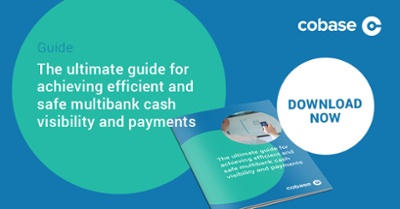Making the most of automation
We have previously identified automating critical workflows as one of the key components of intelligent treasury management.
There are many aspects of the treasury function where automation frees up time for the treasurer to focus on higher value tasks. Skills that are expected to be less important in the future - such as reporting and risk projection - are already being automated.
In the second blog in this series we explore the benefits of automatically processing bank statements and removing manual downloads of balance information from individual bank portals and manual uploads of payment files to every bank.
The obvious reason for moving to automated processing of bank statements is that it is a much more accurate process that reduces the scope for error. Much higher volumes of data can be processed compared to manual processing and it provides for seamless integration into back office systems such as financial accounting or ERP systems (of which more in our next blog).
Automatic bank statement processing enables data to be structured in a way that facilitates improved cash flow analysis. Standardised information enables this data to be consumed easily by back office systems to achieve improved reconciliation.
The major benefit of this integration is increased efficiency – all the benefits of ‘automation by default’ are applicable here.
Any treasurer seeking to run cash flow analysis needs to make sure that all payments (both incoming and outgoing) are processed uniformly so they can be absorbed by a single system without manual intervention or modification.
In many organisations, managing cash positions over multiple banks and accounts remains a manual process, increasing the possibility of human error.
One of the main reasons for this continued use of manual processes is that harmonisation is not easy to achieve. Implementation is complex because every bank uses a slightly different means of connectivity and different payment formats, making it a challenging landscape for individual corporate treasurers to navigate.
In addition, treasurers face more pressing concerns so addressing this complexity is rarely a priority. The perception is that if the existing manual process works there is no imperative to fix it, a view that has been reinforced over the last few years as corporates grapple with many other pressing issues.
Ironically, it is exactly events such as the global pandemic, the war in Ukraine, rising inflation, and the disruption of global supply chains that have highlighted the weaknesses of manual treasury processes.
Eliminating manual handling of payment data reduces opportunities for fraud and adds to the transparency, quality and speed of payments. Digitisation also provides companies with better visibility of their financial operations and improved governance.
In the third blog in this series we will look at the merits of connecting accounting systems and/or ERP systems to your bank(s) and why companies benefit from being able to execute payments from a single platform.
The ultimate guide for achieving efficient and safe multibank cash visibility and payments
Treasury teams looking to optimise their cash management processes realise that making smart decisions requires tactical and strategic planning. However, there are a number of principles that can be applied by any business to increase the level of insight into how funds move into and out of their organisation.
That’s why we created ‘The ultimate guide for achieving efficient and safe multibank cash visibility and payments’. In this guide you’ll find questions that you can ask yourself to determine your current level of efficiency and spot the areas you might need to improve.
Published:




